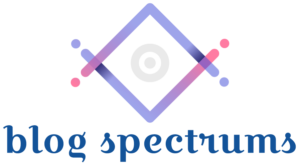In the current ever-evolving landscape of education, LMS has become a core tool that can highly increase the effectiveness of the learning process for learners. For efficiency in ensuring it reaches the intended learner, such systems have to be fitted depending on the need of the learners. This refers to considering factors corresponding to different categories of students and applying specific techniques to answer their needs. In this way if we adapt the digital learning environment then every child can get a chance to be successful in academics in their learning capacity.
Incorporate Adaptive Learning Technologies:
Adaptive learning technologies are at the forefront of customized education that aims at providing education that suits the needs of the learners where the program adapts depending on the performance of the learner. Lms learning management system utilize data from every learner concerning their performance and weakness and they offer learning guidance based on these findings. This enhances differentiated learning whilst at the same time, it keeps the students active in the class by providing lessons that are challenging but not too hard for them. The use of adaptive technologies in learning enables the achievement of increased levels of awareness towards the students’ learning capabilities thereby enhancing a more flexible learning process.
Utilize Multimedia and Interactive Content:
A great benefit of digital learning is the possibility of using several media and interactive contents. These elements can serve the purpose of the different learning style indicators. Thus, those educators who provide content in different formats, have guaranteed that each of the students receives material that meets their style of learning. Further, interactive content are those that may help the students to understand and memorize better as they are engaged in the learning process not just bound to be receptacles of everyday information.
Provide Multilingual Support and Cultural Relevance:
Language barriers can create a serious problem in diversified classrooms. A solution that can help in this aspect is multilingual support in digital learning systems since the majority of learners who are non-native English speakers have to learn in this language. Also, the use of content related to the students’ culture ensures that the delivery of lessons is more interesting and familiar to the learners. Cultural and language diversities in the classroom environment should be embraced because they make a room filled with children from different places acknowledge each other, thus improving learning experience.
Implement Accessibility Features:
The aspect of accessibility is one of the critical components of empowering students with disabilities in their learning affairs through adaptation of learning systems in the digital environment. It consists of yet crucial attributes like Multimedia: screen readers, text-to-speech, associated non-standard text size, and keyboard navigation for the students with vision or motor issues. Also, offering captions and transcripts for the audio and video being produced can be helpful to the people with hearing disorders. Another consideration, to be made during the planning for the content, is where the content can be in universal design where it will be accessible to all the students without modifications.
Facilitate Continuous Feedback and Support:
Regular follow-up and encouragement are crucial for making the training unique. The idea is that digital learning systems can provide a set of elements that can be used for real-time feedback, including quizzes, polls, and interactive discussions. These tools assist teachers in supervising the progress of their learners and recognizing cases that require extra attention. Integrating a lesson plan management system with robust accessibility features allows educators to customize digital learning experiences, ensuring that diverse student needs are met effectively and inclusively. Furthermore, giving students timely feedback about their performance will enable them to embrace the progress they have made them know about the areas they need to improve, encouraging a growth mindset.
Adapting digital educational technologies to address the students’ needs is crucial for the development of effective educational conditions and equal opportunities for the success of all children. Thus, it becomes imperative to stress the importance of classroom differentiation in the age of digital learning so that a better learning environment for students with different learning styles and abilities can be provided.

